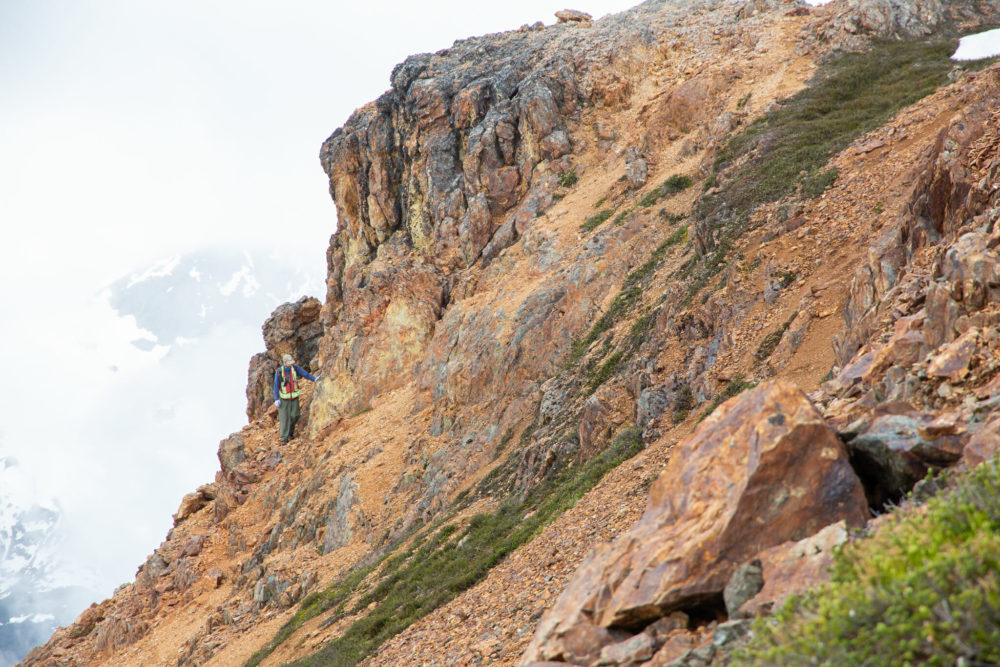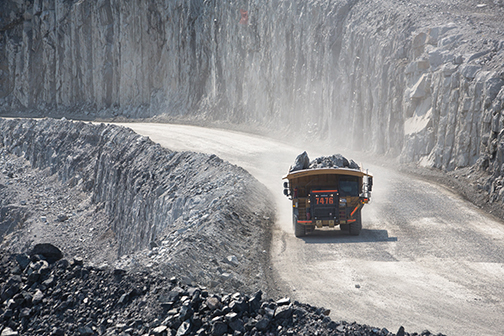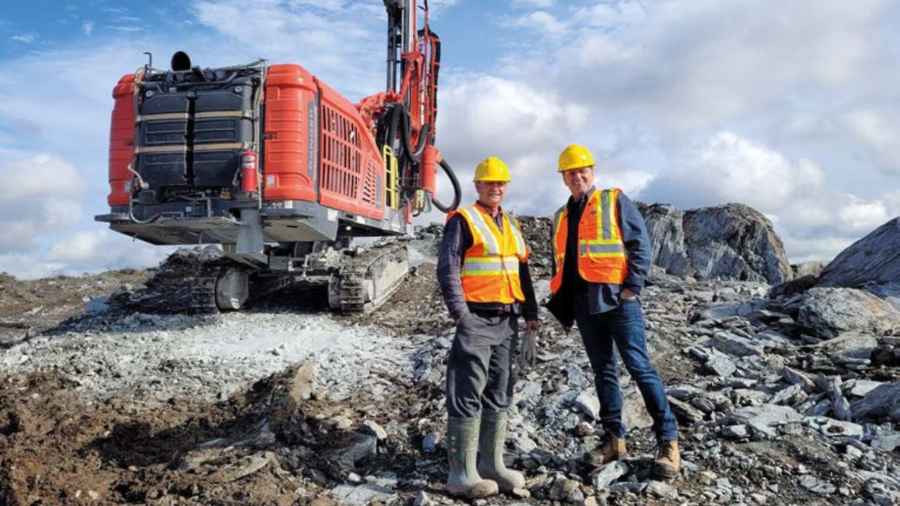Safety rules the road to diamond mines
Call it another urban myth about the Arctic: driving a 50-tonne fuel tanker on a metre of cracking black ice over bone-chilling water is just about the scariest, dumbest thing you could ever do.
Not so, say veterans of the real thing — the Tibbitt to Contwoyto Winter Road. Emphatically, absolutely, not so.
Lured by the History Channel’s wildly successful Ice Road Truckers television series, viewers around the world have been “astonished,” says one reviewer, by its dramatization of the exploits of daring drivers turbocharged on money-lusting bravado.
“The road is probably the safest road in North America,” says Ron Near, Director of Operations for the iconic 420 kilometre Tibbitt to Contwoyto Winter Road (TCWR) from Yellowknife to the NWT’s three big diamond mines.
“What was portrayed in that television series does not have a lot to do with how we manage and operate the TCWR.”
Still, when the scale of the project is sized up, it does gives one pause: 600 kilometres in all, 80 per cent on ice; 8,000 round trips of about 800 kilometres each; 500 drivers. That’s 6.4 million kilometers driven in eight weeks in the dead of winter. Plus a month of construction work.
“While accidents are rare, when they have occurred they have been relatively minor, given the very slow speed of travel regulated on the road, proper security, and good training,” says the road’s website.
So just what makes it so safe and dependable? In short, decades of innovative experience, high-tech science, close cooperation, and a corporate culture that will not tolerate risk to the health and safety of its workers.
Multi-layered safety
Winter roads are essential to remote communities, resource and tourism camps that otherwise may have only summer/water resupply, or air transport that costs about eight times more than a truck. But there are differences between “winter” roads — built with packed snow almost entirely over frozen land, and “ice” roads built mostly on water.
The TCWR is more accurately an “ice” road, and it has evolved remarkably to meet its challenges. First built in 1982 to carry about 800 loads a year into the now-mothballed Lupin Mine, today it routinely sees ten times that number, and far greater volumes, in the same eight-week season to the Ekati, Diavik and Snap Lake mines.
Tim Tattrie, a professional technologist with a 28-year career in the Canadian military, who came to NUNA Logistics Ltd. two years ago, is now the Project Manager on the TCWR. Nuna has built and maintained the road since 1998, and is regarded as Canada’s premier ice road builder.
“It’s all a procedure where multiple levels of safety are employed,” he says, including the work of a year-round safety committee of contractors, carriers, regulators; and the client, the Joint Venture of the three mines that actually own the road licence and pay its $20 million a year price tag.
Tattrie says the real work starts with a team leadership workshop in November, and by early January, safety and site orientation for crews as well-equipped camps and shops are thawed out and readied at Dome Lake, Lockhart Lake and Lac de Gras.
First out, across the road’s 64 lakes, are GPS-guided helicopters acting as airborne scouts for Hägglunds amphibious vehicles, bucking through the snow to blaze the trail for the graders and ploughs that will follow.
They’re equipped with what Tattrie says is probably the key safety innovation in 30 years: the use of ground penetrating radar to “profile” ice thickness.
“It used to be that you’d pick a centre line, drill holes and measure thickness with a stick. The procedure we use now actually checks a continuous radar beam of thickness along the entire centre line.”
NUNA has fitted the suitcase-sized radar apparatus to a sled pulled behind the amphibious Hägglunds, tethered to an on-board computer that gives instant readings of the ice below.
EBA Engineering helped design safety parameters in the 1990s, and continues to consult and provide quality control on NUNA’s own testing methods throughout the trucking season. That starts in earnest with lighter loads heading north by late January; ideal ice thickness is usually achieved by mid February. Warm sunlight thaws, and portages by late March signal the end of the season.
Natural ice builds slowly from below, so to get to full strength sooner (39 inches will support a 64,000 kg Super B tanker), crews are sent to “focus” flood thinner patches by pumping water onto the surface.
Pioneer ice road builders in Manitoba in the 1930s were the first do this when they noticed water gushing out of holes drilled by commercial fishermen.
Another innovation that has helped save equipment and perhaps lives are “stingers,” three-metre long metal pipes fixed to all four corners of snowcats, and to the rear of graders. It’s an idea imported from Saskatchewan by a former NUNA road superintendent, Ron LeBrun, in the early 1990s. Should a wheel or a track break through, the stinger is there to keep the vehicle from dropping all the way through the ice.
Each camp has an EMT (emergency medical technician) on duty 24 hours, and an ambulance. Helicopter or aircraft medi-vac, using the road as an airstrip, is readily available from Yellowknife.
Any vehicle that moves on the road has at least two radio systems and there is constant communication. It’s a far cry from the road’s earliest days when there was virtually no radio at all, recalls today’s road superintendent, Kirk Keller, who was among the crew to venture out from the Lupin Gold mine to build the very first road in 1982.
“You know the buddy system?” asks Keller. “Well there wasn’t no buddies back then,” he says of the early years when small fleets of ragtag equipment punched the very first road.
Security monitors 24/7
With the surge in diamond mine traffic by the mid 1990s, and the need for stringent traffic control, a security system was designed to monitor infractions and serve as a back-up when drivers have problems. It’s now provided by the aboriginal-owned Det’on Cho Scarlet Security and managed by Paul Gamble.
He will hire almost 30 people for the 24/7 task, most of them retired police or military officers familiar with enforcement procedures, well trained on the road’s rules and winter preparedness. Gamble says his team strives to minimize the catch-the-bad-guy approach, and fosters more of a support and assist approach among the drivers.
“We’re not hiding behind posts to catch them… we try to make it a team effort,” says Gamble, himself a retired RCMP officer
The biggest threat is The Wave: the pulse of water pushed under the ice by the rig driving on top. Just as an ocean wave “breaks” on shore, an under-ice wave can burst through as it bounces off a shoreline or shallow reef, or when the opposing waves meet from two trucks. Aside from the immediate danger to the hapless trucker, they can take days to repair and become the weak link in the chain.
Two violation rules are in place to prevent this. The first is really slow speeds — 30 kph tops for fully loaded rigs on open ice, as low at 10 kph on shallow lakes. The second is spacing — keeping trucks at least 500 metres apart.
The penalties are equally stringent: even three kph ov
er will earn a warning. A second fault, or five kph over, gets a five-day suspension. Fifteen over and it’s an outright ban; even littering gets the same harsh sentence.
Every driver goes through an orientation on the 27-page handbook (see it online at: http://www.jvtcwinterroad.ca/jvwr/) and when convoys of as many as four rigs leave the Nuna dispatch yard in Yellowknife every 20 minutes, they’re always led by a veteran driver who sets the pace and coaches the new guys through.
One more incentive to stick to the rules: cash bonuses paid to drivers who come through the season with clean records.
“Since we started this project, we’ve had a high buy-in for the safety rules especially from returning drivers,” says Ron Near, also a retired RCMP officer, who owned the first security service to patrol the road before becoming its current Director.
Big future for winter roads
The mining industry in the NWT employs winter roads extensively. Properties now under development, such as Prairie Creek’s lead-zinc find and Avalon’s rare earth deposit in the south, need them. De Beers’ Gaucho Kue diamond deposit, the Seabridge Gold property and Tyee Gold’s Yellowknife project to the north use the existing TCWR, and Elgin Mining is hoping to re-open the Lupin gold mine.
In Ontario, De Beers’ Victor diamond mine near James Bay relies on a winter road, as do several exploration projects in the Ring of Fire region.
Pelly Construction Ltd. of Whitehorse has been building highways and winter roads across northwestern Canada since 1987. President Keith Byram says the Yukon’s extensive public highway system provides ready access to much of the mineral activity there, and the few roads that are occasionally built are on a much smaller scale than the TCWR.
“Most of them are almost entirely on land,” says Byram, adding that the season can be short. And like this current winter, if there isn’t at least six inches of snow to satisfy environmental rules, the road won’t be built at all.
Exploration has been in high gear for some years in Yukon, and Byram expects that as deposits move closer to production, more winter roads will be built until permanent supply roads are established.
Tim Tattrie shares Byram’s predictions for a growing need for winter roads.
“I think there’s going to be huge requirements for winter roads and ice airstrips,” he forecasts.
Editor’s Note: Bill Braden has recently written a new book on the Tibbitt to Contwoyto ice road.
On Good Ice is published by the TCWR Joint Venture, and is available online at www.yellowknifebooks.com for $31.95 plus shipping.





Comments